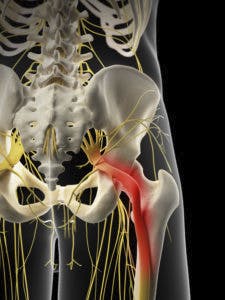Have you ever had a bad night’s sleep and noticed that your aches and pains feel worse the next day? Or maybe you’re dealing with ongoing pain that makes it hard to fall asleep or stay asleep? Guess what? There’s a strong connection between how well you sleep and how much pain you feel. It turns out that sleep problems and pain often go hand in hand, creating a cycle that can be tough to break. At Bacci & Glinn Physical Therapy, we want to help you understand this connection and how physical therapy can play a role in feeling better.
The Sleep and Pain Cycle
Think of sleep and pain like a seesaw. When you’re in pain, it can be hard to get comfortable enough to fall asleep or stay asleep through the night. Then, when you don’t get enough good quality sleep, your body can become more sensitive to pain. It’s a tricky situation because the less you sleep, the more pain you might feel, and the more pain you feel, the harder it is to sleep. This can turn into a never-ending cycle that makes chronic pain even worse. Scientists have found that this connection is really important for how we manage pain and even for preventing long-term pain problems.
How Lack of Sleep Makes Pain Worse
Scientists are learning more and more about why poor sleep can actually increase your pain levels. Here are a few ways they think this happens:
- Messing with Your Body’s Natural Pain Relief: Your body has its own systems for managing pain. When you don’t sleep well, these systems might not work as effectively.
- Upsetting Your Mood and Increasing Sensitivity: Lack of sleep can make you feel more stressed or down, which can make you more sensitive to pain.
- Turning Up the Body’s Alarm System: Sleep problems can cause an imbalance in your body’s systems that regulate pain, potentially making it worse.
- Causing Inflammation: Poor sleep can lead to increased inflammation in the body, which can contribute to pain.
- Changing How Your Brain Handles Pain: Sleep issues can affect how your brain processes pain signals, making even minor aches feel more intense.
Finding Relief: Kathy’s Success
Kathy’s experience shows how our exercises can provide pain relief and improve sleep quality.
“Think of you often as I am daily doing the Total Motion exercises you showed me and they definitely help. Both my husband and I are sleeping much better. My sciatica is not gone but does not affect my sleep like it did before.”
– Kathy W.
FAQ About Sleep and Pain
- Can physical therapy help with sleep problems?
Yes, by addressing the underlying pain, physical therapy can often lead to improved sleep.
- What are some good sleep habits to adopt?
Maintaining a consistent sleep schedule, creating a relaxing bedtime routine, and ensuring a comfortable sleep environment are key.
- How does pain affect sleep?
Pain can make it difficult to fall asleep, cause awakenings during the night, and lead to overall poor sleep quality.
- Can lack of sleep make injuries worse?
Yes, poor sleep can increase inflammation and reduce the body’s ability to heal, potentially worsening injuries.
What You Can Do About It
The good news is that there are things you can do to break this cycle of poor sleep and pain. Here are a few ideas:
- Talk to your doctor if you’re having persistent sleep problems or chronic pain.
- Focus on establishing healthy sleep habits.
- Consider physical therapy to address the root cause of your pain.
- Evaluate your mattress and pillows for proper support.
Getting enough good quality sleep is just as important for your health as eating well and exercising. When you address both your sleep and your pain, you’re more likely to feel better overall.
Your journey to recovery starts here. Reach out to our Visalia office at (559) 733-2478 or our Hanford office at (559) 582-1027. We’re here to help you feel better.
Reference
Haack, M., Simpson, N., Sethna, N., Kaur, S., & Mullington, J. (2020). Sleep deficiency and chronic pain: potential underlying mechanisms and clinical implications. Neuropsychopharmacology, 45(1), 205-216. Link here.

